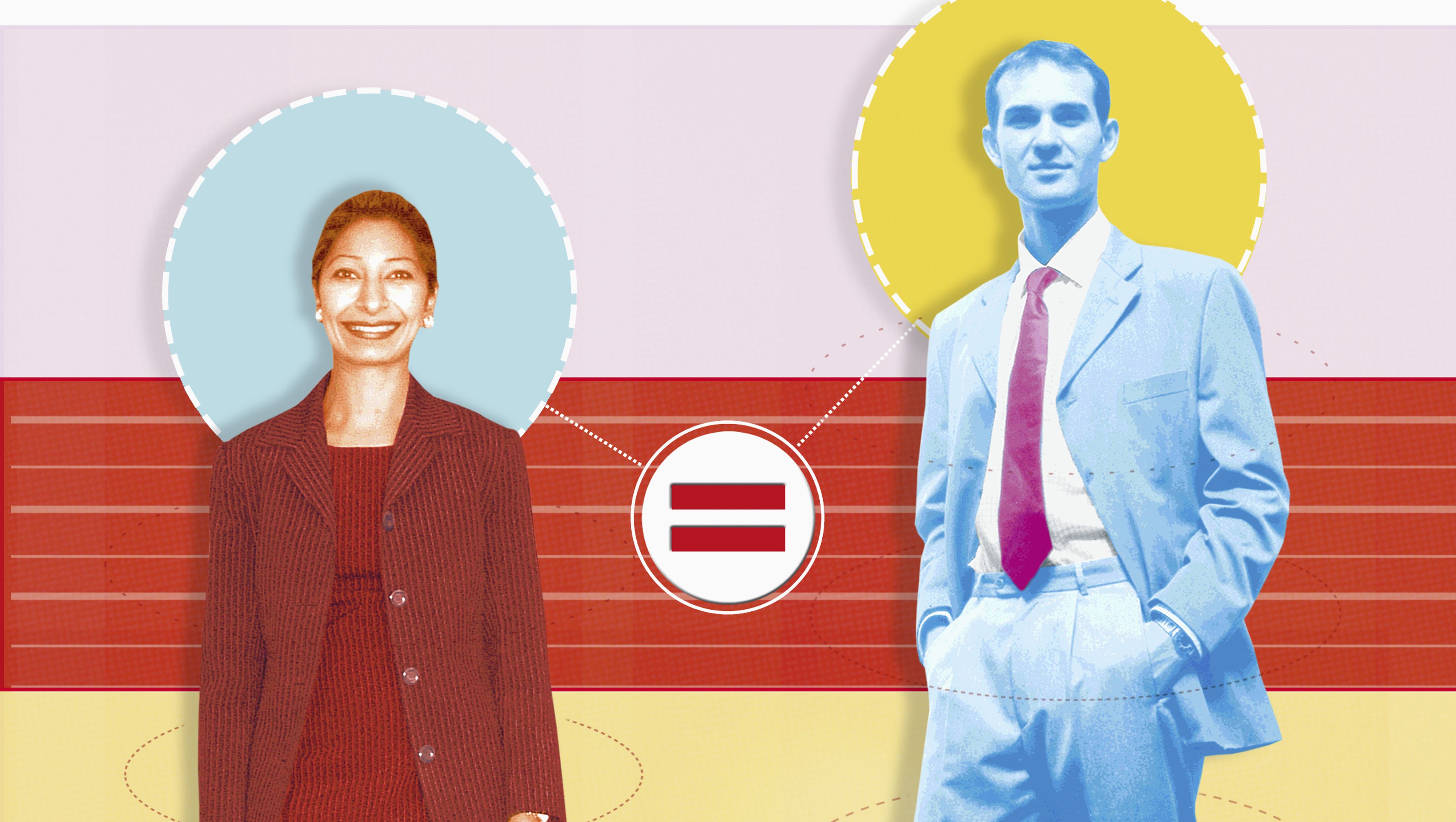6 Surprising Reasons You're Being Paid Less Than a Man
We know women make 77 cents to a man's dollar—but blatant sexism isn't the only reason why.


If you're a working woman, chances are you are well aware of the pay gap that exists between men and women in the United States, where we continue to make 77 cents to every man's dollar. But the explanation for this discrepancy doesn't come down to just discrimination. Rather, there's a multitude of reasons why the pay gap exists. According to a study done by Stanford University, 60 percent of the causes of the pay gap has a defined explanation including reasons such as the specific industry and occupation, experience in the labor force, education, among others. That means that 40 percent of the explanation is unknown—and could be attributed to sexism, whether it's intentional or not. For the factors we do know, we're breaking it down for you, piece by piece.
Job Choice
Science, technology, engineering and mathematics, collectively known as STEM, are some of the best paying fields for workers today—women who work in these fields make 33 percent more than their female counterparts in other industries. Women make up just 24 percent of workers in STEM jobs, according to the White House. The number of women in many high-paying jobs beyond STEM fields, such as finance, falls short. Even in the same industry, such as medicine, women are found more often as nurses and less often as surgeons, leading to a big difference in pay. On the opposite end of the spectrum, women dominate the lower-paying sector of the workforce, making up two-thirds of minimum-wage workers.
Hours On The Clock
As with many things in life, the time you put into work is a huge influence on what you get out of it. Typically, men work longer hours—an average of six more per week, according to Business Insider. On top of that, they're more likely to work weekends, too. These statistics aren't too surprising when taking into account that women are twice as likely to work part time, according to the United States Department of Labor. However, don't think that the difference in number of hours worked is all by choice—1 out of every 5 part time working women is doing so because she can't find full time work.
Education
Women now make up for the majority of college graduates—for the class of 2012, 56.9 percent of undergraduate degrees, and 59.6 percent of master's degrees, and 51.1 of all doctoral degrees, according to the Department of Education. Unlike many of the other factors listed, the overall growing education level for women has shrunk the pay gap by nearly seven percent.
Mommy Tracking
The long-standing expectation of women as the primary caretaker when it comes to children also plays a role in the pay gap. According to the National Women's Law Center, the average mother spends one hour and 43 minutes for every hour a father spends with his or her child. But amount of time spent in the office due to parenting isn't the only way that working mothers are disadvantaged. Working mothers were recommended less for hire, and when they were, for lower starting salaries than childless women, while employers perceived fathers more positively than their childless counterparts, according to a study by sociologists Shelley Correll, Stephan Benard, and In Paik.
Working Conditions
Being a bit of a daredevil can have its payoffs: Men are more likely than women to work a job that may be dangerous or undesirable—think fields like construction, iron and steel work, truck driving, industrial machine repair—all listed in the top ten most dangerous jobs by the U.S. Bureau of Labor Statistics, and jobs typically dominated by males. In addition, men are more likely to work in "undesirable locations", such as places that are underpopulated, or even just uncomfortable (working in a loud construction site on a 90 degree day). Doing the job that's viewed as unwanted by many can help boost a paycheck. However, it's not all because of lack of desire to work in these conditions: women can also experience difficulty in breaking into industries these labor-intensive, historically male-dominated industries. And for the few women who do work in fields like construction, the pay gap tends to be relatively small.
Negotiation
When you want something, you need to ask for it. Unfortunately, when it comes to salary, this isn't the rule of thumb for many women. Women are much less likely than men to negotiate their salaries—eight times less likely, to be exact. And women ask for promotions or raises 85 percent less than men do. Even when they do negotiate for themselves, women on average asked for $7,000 less than men, according to a study by the University of Texas. Especially when it's not clear if negotiation is expected or permitted by the employer, according to a study by the National Bureau of Economic Research. Gather the courage to negotiate your salary, you'll see the payoff—literally.
Get exclusive access to fashion and beauty trends, hot-off-the-press celebrity news, and more.

I'm an Associate Editor at the Business of Fashion, where I edit and write stories about the fashion and beauty industries. Previously, I was the brand editor at Adweek, where I was the lead editor for Adweek's brand and retail coverage. Before my switch to business journalism, I was a writer/reporter at PEOPLE.com, where I wrote news posts, galleries and articles for PEOPLE magazine's website. My work has been published on TheAtlantic.com, ELLE.com, MarieClaire.com, PEOPLE.com, GoodHousekeeping.com and in Every Day with Rachael Ray. It has been syndicated by Cosmopolitan.com, TIME.com, TravelandLeisure.com and GoodHousekeeping.com, among other publications. Previously, I've worked at VOGUE.com, ELLE.com, and MarieClaire.com.